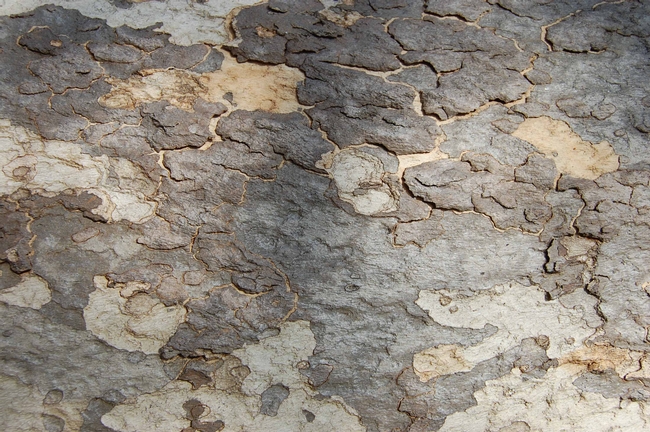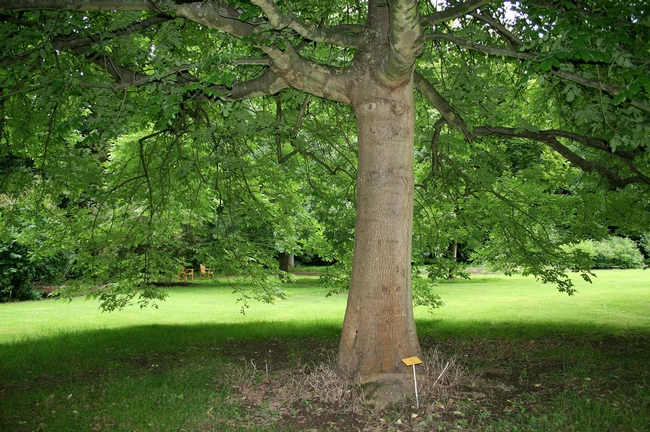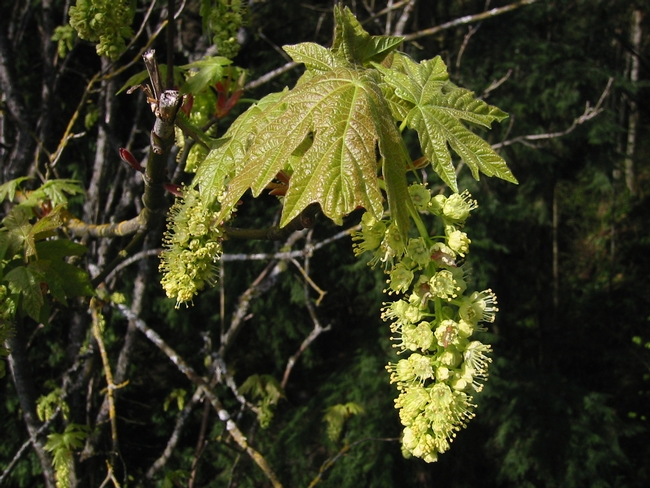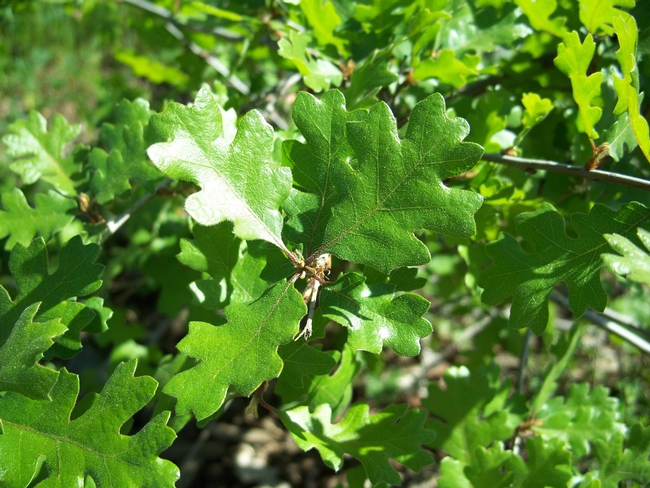By Jeff Oster, UC Butte County Master Gardener, October 13, 2017.
Chico's Lindo Channel, also known as Sandy Gulch, is a seasonal waterway that serves as a flood control channel. The soil has significant percentages of sand and cobble, further enhancing summer dryness. Since moving there in 1991, I have established a drip irrigation system to help establish native plants on the streamside bank on my property. What has worked for me along the Channel could also work in a variety of gardening conditions.
I have separated the plants according to size (and therefore purpose), forming three articles: today's article on large trees, and two more articles, one smaller shrub-trees, and another on shrubs, which will appear in this column in the coming weeks. Each article will describe plants that have been successful in the Lindo Channel gardening conditions, and indicate the variety of insects, birds, and mammals that make their homes in them.
Large Trees
Large trees are highly effective features in a landscape, but are also useful in creating a high canopy so that a variety of plants (including shade plants) can grow underneath, and in providing substantial habitat for wildlife. Western Sycamore, Oregon Ash, Big Leaf Maple, and Valley Oak do well in the Lindo Channel environment.
Western Sycamore (Platanus racemosa)
Western Sycamore (also commonly known as California sycamore, California plane, and Aliso) is native to California and Baja California, where it grows in canyons, floodplains, and along streams. They are also often found next to drier habitats such as chaparral, valley grassland, mixed woodlands or evergreen forests.

For more information on Western Sycamore, see California Native Plant Society, Western Sycamore.
Oregon Ash (Fraxinus latifolia)

Seeds are single samaras (fibrous wings of papery tissue), with long wings (up to two inches) borne in large, drooping clusters on female trees. These are eaten by birds and small mammals, while the foliage provides sustenance for the larvae of pale swallowtail, two-tailed swallowtail, and western tiger swallowtail butterflies.
Oregon Ash trees are susceptible to caterpillars and scales, anthracnose, root rot, rust, sooty mold and verticillium wilt.
For more information on Oregon Ash, see California Native Plant Society, Oregon Ash.
Big Leaf Maple (Acer macrophyllum)

The seeds, buds and flowers of Big Leaf Maple are a favorite food of many small mammals and birds. Speciesassociated with Big Leaf Maple are evening and blackheaded grosbeaks, goldfinches, pine siskins, warblers, vireos, bushtits and kinglets.
For more information on Big Leaf Maple, see California Native Plant Society, Big-Leaf-Maple.
Valley Oak Quercus lobate
The Valley Oak is native to riparian areas of the central valley, the valleys of the Sierra foothills, and the coast ranges of California. The fastest growing (three to four feet per year) of California oaks, it is deciduous and can grow to 70 feet. With age, the branches are irregular and spreading. Leaves are deeply lobed. Valley oaks like sun and moderate water with a water table above 70 feet. Do not water established oaks. They are long-lived and tolerant of seasonal flooding and a variety of soils (though they prefer deep soils with pH of 6 to 8). These trees are deer resistant.
Valley Oaks provide nesting sites for birds, and are popular with insects year-round and with the birds that eat them (including bluebirds, warblers, phoebes, flycatchers, vireos, swallows, and titmice). This tree hosts numerous species of butterfly, including California sister, propertius duskywing, mournful duskywing, golden hairstreak, and gold Hunter's hairstreak. The acorns of the Valley Oak are a staple food of the acorn woodpecker, but a variety of mammals and birds also eat them, including scrub jays, yellow-billed magpie, deer, bears, and squirrels.
For more information on Valley Oak, see: California Native Plant Society, Valley Oak.
The following two charts refer to plants referenced in the three part series on native plants that thrive in Chico and Lindo Channel.
